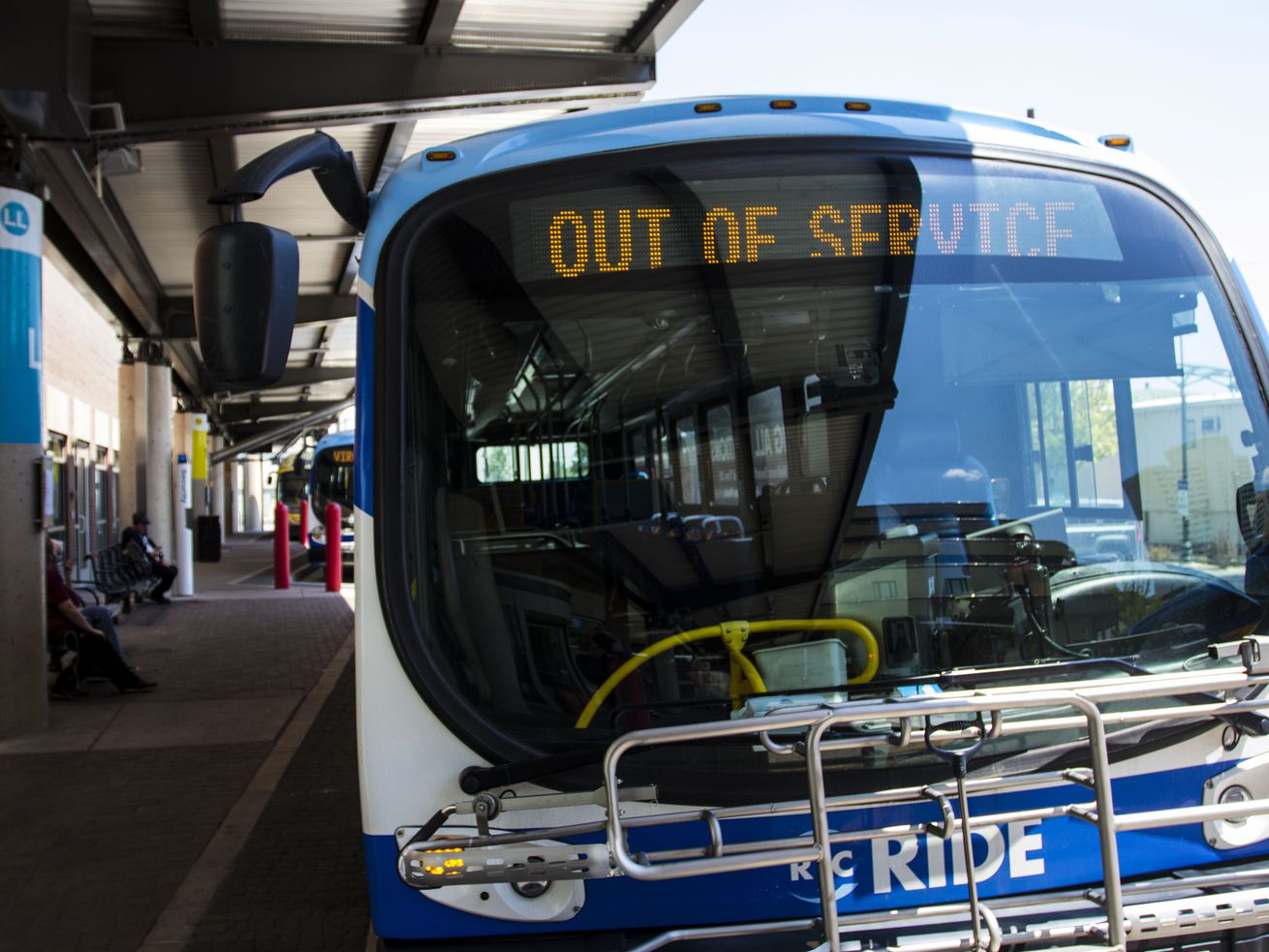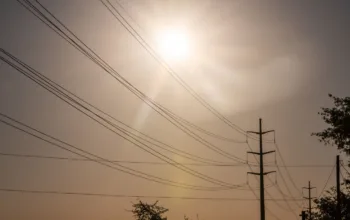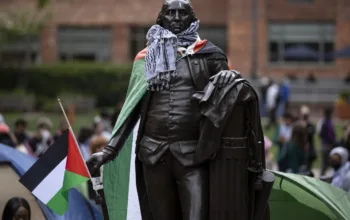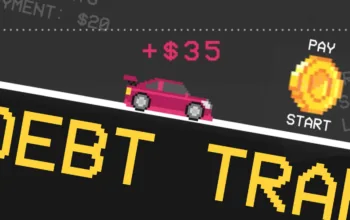Experts say the legislation doesn’t address the fundamental challenges of public transportation in the US.
I live in the Chicago area, in Evanston, on the Chicago Transit Authority’s Purple Line. It’s a great place to be if I want to go downtown, especially during a weekday rush hour, when the express train runs. But if I want to go to O’Hare Airport — in the western suburbs — I have to take the Purple Line to the Howard station, transfer to the Red Line, take it all the way downtown, and then transfer again to the Blue Line. All told, my trip could take up to two hours.
And that’s in Chicago. In places like Atlanta or Charlotte, North Carolina, service is less frequent. If you’re in Phoenix or Houston, the immense sprawl of those cities means that in almost every situation, it makes more sense to drive if you have access to a car.
Enter Congress’s bipartisan infrastructure bill, which commits $39 billion in new funding for local public transit. Its goal is to fight the vicious cycle wherein the poor quality of facilities, stations, trains, and buses cause delays, creating an unreliable transit experience that leads to declines in ridership. When ridership declines, transit agencies generate less revenue through fares, meaning they lack the funds to take on the repair and maintenance problems that led to decreased ridership in the first place.
That’s where many systems are now: Ridership declines have reached record highs during the Covid-19 pandemic. Emergency funding from the federal government allowed many of the nation’s top transit agencies to maintain service, but a more permanent solution is needed.
Given that the American Society of Civil Engineers estimates a transit investment backlog of $176 billion, robust federal legislation for transit could be the boon that agencies desperately need.
With more federal funding, cities could fix their aging fleets and stations, improve service on popular lines, add new routes, and reconfigure their systems to meet new, post-pandemic transit needs, all while accounting for the reductions in traditional, downtown nine-to-five office jobs that had already begun before the pandemic. Public transit could become a consistently reliable, affordable option, bringing people out of their cars and making a significant dent in our greenhouse gas emissions.
This is what the infrastructure bill aspires to do. Unfortunately, it falls short.
The bipartisan bill addresses only a part of public transit’s problems
There are four main problems with public transit in the US: infrequency, limited access, delays — and the negative effect on ridership the other issues bring.
But the infrastructure bill only partially addresses delays and access, and does little to fix frequency issues or promote strategies known to boost ridership.
Some delays are outside of a transit system’s control, like traffic affecting buses or trains stopping because a passenger is having an emergency. But many are the function of maintenance issues.
The Department of Transportation reported in 2017 that 36.4 percent of all facilities, 21.4 percent of systems, and 18.5 percent of vehicles were considered in “poor” condition over a 10-year period. Such conditions can lead to trains breaking down, slow performance on old tracks, track fires, engine malfunctions, or even just doors struggling to close — all of which can cause delays that have ripple effects on other trains and buses.
Maintenance-related problems are in part a symptom of federal funding having fallen off since the significant federal investment in the 1970s and 1980s, which allowed prominent transit agencies like New York’s Metropolitan Transit Authority (MTA) or Washington, DC’s Washington Metropolitan Area Transit Authority (WMATA) to grow to their current sizes.
Without that significant federal investment, problems have arisen even in the strongest systems — WMATA has shut down rail service on two lines and delayed its Silver Line expansion, and the CTA has put off a Red Line expansion and station upgrades in Chicago. Smaller systems struggled too, especially after the Great Recession, leading them to cut down on service.
The bipartisan infrastructure bill authorizes a significant amount of spending to address these sorts of issues: In Chicago, for instance, Joseph Schwieterman, a professor of transportation and urban planning at DePaul University, said he expects the funding to lead to improved service on the CTA’s busy Red and Blue lines following needed repairs to trains and stations. Fixing old rail cars and improving stations should streamline riders’ ability to move through the system in an efficient manner, leading the reliability of the entire system to increase.
The bill’s funding for capital improvement grants could be used to finally build Chicago’s long desired Red Line extension. And Schwieterman said it would allow Metra, Chicago’s commuter rail agency, to replace old locomotives with new ones. It could also give Metra the ability to potentially experiment with off-peak service hours, giving those not riding the Metra to nine-to-five jobs greater access to its trains.
Such improvements aren’t limited to Chicago; the bill could broadly increase accessibility through funds for rail line extensions and new bus routes, adding service to places where there was previously no public transportation option within walking distance.
And Amy Rynell, executive director of Chicago’s Active Transportation Alliance, said she was pleased by the dedicated funding for making transit stations more accessible for people with disabilities and for seniors — that means more elevators, kneeling buses, tactile blocks, and other features.
Finally, the bill will allow systems to make strategic investments in bus electrification, with $7.5 billion set aside for building fleets of zero-emissions buses and charging stations at bus depots. Besides the environmental benefits, Jarred Johnson, executive director of the Boston advocacy group TransitMatters, said the rider experience would be smoother using new electric buses — quieter and more spacious, and with stations where riders will have greater protection from the elements.
“You’d have new, modern bus facilities, and the bus service would be much better,” Johnson said.
So, let’s go back to my dilemma in Chicago. Through the infrastructure bill, I can ride on an electric bus. I can probably take the Red Line farther, and the stations I use will be safer and easier to navigate. There will be new bus routes. And when I take the Red Line back up from the Loop, I’ll probably experience fewer delays because the CTA will have the funds to address chronic maintenance and repair issues.
All of this doesn’t mean public transit’s problems are all solved, however.
The maintenance and construction needed to end delays and expand accessibility is expensive, time-intensive work — Chicago’s Red and Purple Line Modernization program, a capital investment and rebuilding project that would fall under the bipartisan infrastructure bill’s purview, is projected to cost $8.7 billion over 10 years. Given those amounts, many transit experts question just how many improvements $39 billion can buy.
Even in the best-case scenario, trains and buses will be no less frequent than before, which can mean long wait times, especially at off-peak hours. And though my own personal access will be expanded, not all systems can expect to see new rail and bus lines. Some riders will continue to have the same problem they have now: A bus that comes infrequently, albeit on time, can functionally feel the same as having no bus at all.
Operations funding is key to improving public transit
Public transit agencies definitely need help building new rail lines and new stations, buying new buses and trains, and upgrading or maintaining facilities and fleets. And investing in them will help people.
But those investments aren’t likely to impact frequency or supercharge ridership. The most effective way to help transit agencies with those things would be to actually fund operations — meaning the costs that go into running service.
That could take a variety of forms. For instance, it could mean more funding for labor, a huge portion of any system’s operations budget. Some cities, such as Cincinnati and Chapel Hill, North Carolina, struggle to keep up with passenger demand due to a shortage of transit operators; more money for hiring (and for raising salaries to attract applicants) could help address this issue. More operators would allow for greater service hours and, in some cities, more frequent buses and trains.
Fully funding US transit operations would take a large, sustained investment: roughly $20 billion annually, according to the public transit advocacy group TransitCenter. By its estimates, an initial investment of about $550 million in a large metro such as Philadelphia could increase service hours and frequency by 34 percent, and an investment of just $40 million in a medium-sized metro like Raleigh, North Carolina, could bring service hours and frequency up by nearly 70 percent.
Those sorts of service hour extensions mean buses and trains would be available at all times, helping those who work early and late shifts, as well as those who need to get around while the increasingly rare nine-to-five group is at work. And it would mean far shorter wait times: A bus that comes every 12 minutes instead of every 40 is critical for reliability and access; more frequent service would ensure that missing a bus would no longer mean being horribly late, or worse, effectively stranded.
And investing in operations can also solve another problem: ridership.
While some systems are doing well with ridership, most are not, especially since the pandemic reduced the traditional office commute. That means less money for already cash-strapped systems to use on both maintenance and preparing for future needs.
TransitCenter’s communications director, Ben Fried, told Vox that cities investing in operations can also help systems see increases in ridership and fare revenues in a way that investing in construction does not.
Dallas and Denver have invested heavily in building new light rail to bring people in from the suburbs over the past few years. But they have not seen an uptick in ridership, Fried said. Seattle, however, added more frequent bus service in 2015 in response to declining ridership numbers. The initiative, paid for by a new tax, spent $50 million annually — much less than the cost of a new light rail line. Ridership surged (until the pandemic), and the percentage of households with access to frequent bus service rose from 25 percent in 2015 to more than 70 percent in 2019.
Other cities have invested in operations and achieved similar results. San Antonio, Texas, for example, increased operations spending by $14.3 million in 2018, and ridership jumped by more than 20 percent within a matter of months.
“The reality is that most parts of the US are not going to get, and don’t need, six [driverless train tracks] on their rail,” Yonah Freemark, a senior research associate at the Urban Institute, said. “They need regular bus service.”
And it’s there that the bipartisan infrastructure bill falls short.
“There’s a lot of money for new buses and updated facilities, and things like that,” Beth Osborne, director of Transportation for America, said. “It still will likely be as dangerous and difficult as ever to reach that facility, but it’ll be real pretty.”
A change in priorities is needed to fix public transit
Perhaps an even larger issue than operations funding is that, for decades, private transit has been prioritized over public transit. And that is the case with the new infrastructure bill, as well: There’s $110 billion for highways, bridges, and roads — and state departments of transportation do not have to use those funds to address existing highway repair backlogs, but they can use it to widen existing ones and build new roadways. (The bill also dedicates $66 billion to rail investments, but that falls far short of what it would take to substantially expand high-speed train networks in the US).
Public transit experts worry that major investments in private transit infrastructure will create more congestion in cities and make bus routes slower, incentivizing both greater suburban sprawl and dispersed job concentration. Fried called those latter two issues a “heavy blow” to transit, given that they solidify driving as the easiest way to get to work, thereby exacerbating existing ridership issues.
The right investment would unlock a new era for transit, where a combination of capital and operations funding could increase service and expand into new areas with clean energy fleets. But such an investment would need to be several times what has been allocated — so much that even if the $110 billion the bill allocates in new funding for highways, bridges, and roads had gone to public transit instead, it likely would not have been enough.
If the bill is enacted, your local subway station might look better, and your bus might be electric — but for the vast majority of Americans, it will still make more sense to drive to your destination.
Author: Gabby Birenbaum
Read More



